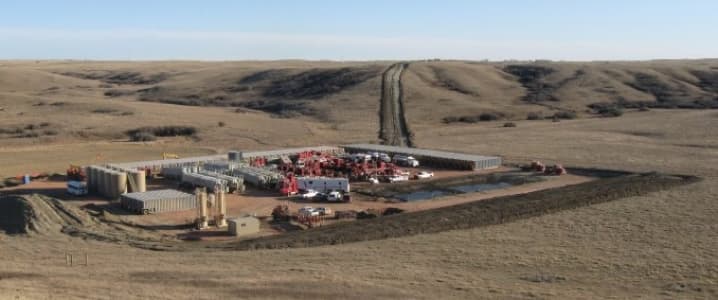Shale drilling has become a lot cheaper over the past three years, with new drilling techniques, efficiency gains and learning-by-doing helping to lower breakeven costs. The IEA says that U.S. shale has achieved cost reductions on the order of 30 percent in 2015 and another 22 percent in 2016, although individual shale basins have seen much larger cost declines.
Still, some of the “efficiency gains” could be temporary, as I have discussed in previous articles. As drilling picks up, the supply of oilfield services and equipment will tighten, putting upward pressure on the cost of contractors for oil producers. Rystad Energy sees cost inflation of about 10 to 15 percent this year.
There are more signs of this phenomenon playing out. Bloomberg reports that some Permian oil producers are having trouble hiring workers, even when their job listings advertise an enticing salary of $80,000 per year for truckers. “It’s tough,” said the CEO of Agility Energy Inc, an oilfield services company. “We’ve got commitments that are very difficult to keep right now because we can’t get the drivers.”
The strain on services is being passed on to producers. Rig prices are rising, now that more of them are being called back to work. Bloomberg cites figures from Nabors Industries, the largest land-rig contractor, which is hiking rig rates from $17,000 per day in 2016 to $20,000 per day this year. Related: Oil Prices Under Pressure From Record Breaking Inventories
Then there is the cost of frac sand, a key ingredient used in hydraulic fracturing. Oil drillers have long used frac sand to frac a well, but since the collapse of oil prices in 2014 they started to pump increasingly larger volumes of sand down their wells in order to improve the flow of oil and gas. Raymond James estimates that the volume of sand used in shale wells increased 40 to 50 percent between 2014 and 2016 on a per foot of well depth basis.
The WSJ says that a typical shale well in the Permian would use $350,000 worth of frac sand in 2016; but rising prices could mean that the bill rises to between $800,000 and $1 million this year. On a $6 million shale well, that means price increases from frac sand alone could add more than 12 percent to the cost of drilling a new shale well in West Texas. It is no wonder that frac sand producers Hi-Crush Partners and U.S. Silica Holdings have seen their share prices rise 380 percent and 170 percent over the past year, respectively.
(Click to enlarge)
Also, much of the resurgence in drilling is all concentrated in one place – the Permian Basin. As a result, land prices are surging, which will also add to the cost of new drilling. Wood Mackenzie estimates that the $60,000 per acre rate for new land in much of the Permian is 50 times more expensive than it was four years ago. Related: Saudi Oil Minister Says Market Intervention Is Ineffective
It is unclear what this will mean for overall U.S. oil production. Higher drilling costs was a feature of the original shale boom between 2010 and 2014. That put shale companies on a dangerous treadmill of needing to drill an ever-growing number of wells to pay off old debt. For now, most oil analysts see a vigorous rebound for shale production this year and next.
The cost reductions since 2014 have been billed by the industry as monumental – putting drillers on sounder financial footing going forward, allowing companies to survive and thrive in a world of $50 oil.
That remains to be seen. The IEA sees U.S. shale adding 500,000 bpd in additional production this year, and by a further 530,000 bpd in 2018. But beyond that, growth slows as the best shale spots become drilled out. The IEA was hardly bullish in its latest Oil Market Report regarding the long-term prospects of shale. Beyond 2018, “producers are unlikely to support further increases in activity in the absence of incremental price increases and/or additional cost/technology improvements. As production rises, more wells will have to be drilled just to maintain output levels. Furthermore, as the best resources are developed and less productive areas are next to be tapped, and as input costs (such as steel, sand, labour, etc.) are likely to increase, the economics of new wells will again deteriorate,” the IEA concluded.
The oil industry gathered in Houston this week for the annual CERAWeek Conference, and with oil prices stabilizing in the $50s per barrel, the optimistic mood from industry participants is palpable. But while 2017 might be better than previous years, creeping cost inflation should temper the industry’s ebullience. Moreover, the longevity of the nascent shale rebound will be determined not in Texas, but in Vienna. If OPEC decides not to extend its production cut deal through the end of the year, oil prices could head down again. Finally, even if 2017 and 2018 bring improvements to shale drillers, the longer-term fortunes of shale drillers are still uncertain.
By Nick Cunningham of Oilprice.com
More Top Reads From Oilprice.com:
- Is This Argentinian Shale Play The Next Permian?
- Saudi Arabia’s Secret Meetings With The World’s Largest Oil Traders
- IEA: Huge Oil Price Spike Inevitable



















